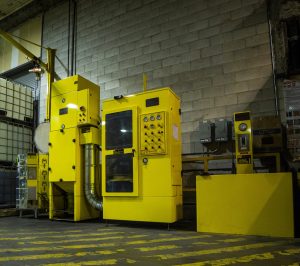DPF Cleaning Machine
DPFs are designed to reduce diesel particulate matter emissions by 80% but they can suffer from wear and tear. That’s why DPF cleaning is so important.
One of the best dpf cleaning machine ways to keep your truck running like new is to regularly have your DPF cleaned. This will help your engine work more efficiently and prevent costly repairs.
Website design By BotEap.com
Whether you use a fuel filter, air filter or diesel particulate filter, these devices collect and hold the contaminants that come out of your truck’s exhaust system. Over time, these contaminants build up in your filter and start to clog it up.
How Long Does it Take to Clean a Diesel Particle Filter With a DPF Cleaning Machine?
This is a process called regeneration. During this process, your diesel engine’s ECU ignites post-combustion fuel injection to burn off the soot particles that have built up in your exhaust pipe. This is an automated process that your vehicle will carry out if it meets certain conditions.
But there are some things that the carbon cleaning machine can’t burn off, such as fuel additives, oil lubricants and microscopic metals that have dissolved from engine wear. That means that if your DPF gets too clogged, it will fail to function properly and you’ll need to have it replaced.
The average lifespan of a DPF is 100,000 miles, but it can be shorter or longer depending on your operating conditions. For example, if your truck is used in regional or local service where it idles for long periods of time, it’s likely to need cleaning sooner than a truck that is hauling a lot of freight across the country.
While air cleaning and other techniques can sometimes remove the soot, a full clean requires baking or blowing the DPF to loosen and burn off all of the ash that has built up over time. This process is called “bake and blow.”
It’s usually only needed for about 10% of filters brought in for servicing, according to manufacturers. The most common type of DPF cleaner is the air-based system, which uses compressed air to remove soot. Some of these systems also use suction to pull out contaminants from the filter cells.
Another type of DPF cleaner involves using a thermal process to heat the filter up and melt any ash that has built up over time. Some of these thermal DPF cleaning machines are even able to oxidize any remaining soot that is still present on the substrate of the DPF, eliminating hardened ash.
A third type of DPF cleaner uses a water-based approach to remove soot and ash from the filter’s substrate. This is a much safer, more effective way of removing soot and ash from your DPF than using air or a chemical solution.
While these DPF cleaning methods may seem complicated, they are fairly simple to perform. However, it is important to choose a company that has the proper equipment and the experience to do the job right. A good company can save you money and headaches by providing a thorough, professional clean that won’t affect your warranty.